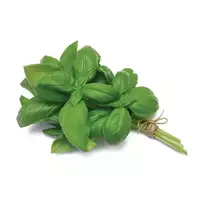Common stranglefish (oregano)

Common stranglefish (oregano) belongs to the Yasnotkovye family and combines about 50 species of herbaceous plant under its name. The plant received its second and more common name oregano in the culinary world thanks to the scientific Latin name Origanum. Common fragrance (oregano) belongs to the most ancient plants that a person began to eat several thousand years ago. It is believed that for the first time common stranglefish (oregano) began to be used in ancient Greece.
Historians have found repeated references to the healing properties of stranglefish (oregano) in the writings of such ancient Greek philosophers and doctors as Hippocrates and Dioscorides. The common stranglefish got its original name oregano thanks to the Greek language, translated from which the word oros means "hill or mountain, " and ganos - "shine. " It's all about where the plant spreads. In Greece, stranglefish grew on the stones of the mountains, during the flowering period the plant acquires a glossy glow. Hence the name oregano, which literally translates as "brilliant decoration of the mountains. "
The Benefits of Strangles (Oregano)
The beneficial properties of stranglefish (oregano) have been known to mankind since ancient times. The main benefit of stranglefish (oregano) is the chemical composition of the plant, which is rich in essential oils. In addition, ascorbic acid and tannins are present in a large amount in the composition of odorans (oregano). In folk medicine, fragrance or oregano is used as a component of herbal infusions and collections. It is believed that the benefits of strangles (oregano) are invaluable for the female body, since the active substances included in the plant can affect the health of the reproductive system.
Dushitsa (oregano) has pain-relieving abilities, and also helps restore and increase lactation. Gynecologists recommend eating stranglefish (oregano) for women who suffer from pain during the menstrual cycle. The plant promotes better digestion and has a positive effect on the human nervous system. In folk medicine, dushitsu (oregano) is used as an anti-inflammatory drug.
Harm of the Strangle (Oregano)
However, for all the benefits, there is also the harm of strangles (oregano) to the human body. First of all, oregano is not recommended to be eaten by pregnant women, because the plant can provoke a miscarriage or, above all, a temporary birth. Also, the harm of strangles (oregano) can manifest itself in the form of a severe allergic reaction in people who suffer from individual intolerance to some spices and spices.
In cooking, both fresh leaves of the plant and dried stranglefish (oregano) are used. The most devoted fans of oregano, as spices are considered residents of Greece and Italy. In these countries, a rare dish is complete without the participation of strangles (oregano). The interesting thing is that the taste and smell of oregano is strikingly different depending on the type of plant. In our latitudes, dushitsu (oregano) is more often used to preserve vegetables. It is believed that the oregano seasoning will best emphasize the taste and aroma of the dish if you add a fragrance at the final stage of cooking the dish.
common (oregano) fragrances 265 kCal
Energy value of common stranglefish (oregano) (Ratio of proteins, fats, carbohydrates - ju):
Proteins: 9 g (~ 36 kCal)
Fats: 4.28 g. (~ 39 kCal)
Carbohydrates: 68.92 g (~ 276 kCal)
Energy ratio (b | y): 14% | 15% | 104%
 Español
Español Français
Français Português
Português Русский
Русский 简体中文
简体中文 繁體中文
繁體中文 日本語
日本語 한국어
한국어 العربية
العربية Türkçe
Türkçe Қазақ
Қазақ Deutsch
Deutsch Italiano
Italiano Українська
Українська
